Agriculture is the backbone of Indian economy and within agriculture livestock plays an important role in providing sustainable income to farmers throughout the year. One of the interesting form of livestock rearing is Sheep rearing.
Sheep belongs to the Family- Bovidae, Genus-Ovis, Species-Aries.It is an important economic livestock species contributes greatly to the Indian economy. They play an important role in the livelihood of a large percentage of small and marginal farmers and landless labours. Sheep is reared for meat and wool purpose, where India is the largest exporter of Sheep and Goat meat to the world and it stands 5th in meat and 2nd in chevon production in the world and it has wool production of 43.6 million kg (Annual report DAH 2016-17).
According to 20th Livestock Census total sheep population in India is 74.26 million and 13.87% is the contribution to livestock population from sheep. Karnataka stands 9th position with contribution of 29 million sheep population. Where, Gadag district of Karnataka supports around 4.5 lakh population. It is a Semi-Arid region and the climate of this district characterized by the tropical monsoon which indicates the seasonal weather throughout the year, with less rainfall having a major non irrigated lands. Therefore here The Sheep is widely sustainable with great income of profitability.
I opted one of the Taluk named Shirahatti of Gadag district, where we can find many farmers dependent on Sheep rearing. There are so many farmers who are practicing sheep rearing from generations in this region, but I have studied among one Shepherd who has selected the local breed Bannur (Mandya). It is native tract of Karnataka, with majority white to black colour. It includes physical trait of compact body, typically reverse ‘U’ shaped from ear end. Mainly it is famous for its mutton purpose.
The family named Karigar, is the well-known example for Sheep rearing activities from past 5 generations in this region. Their ancestors around first 3 generations were illiterate and purely a Shepherds with having 1100 Sheep.
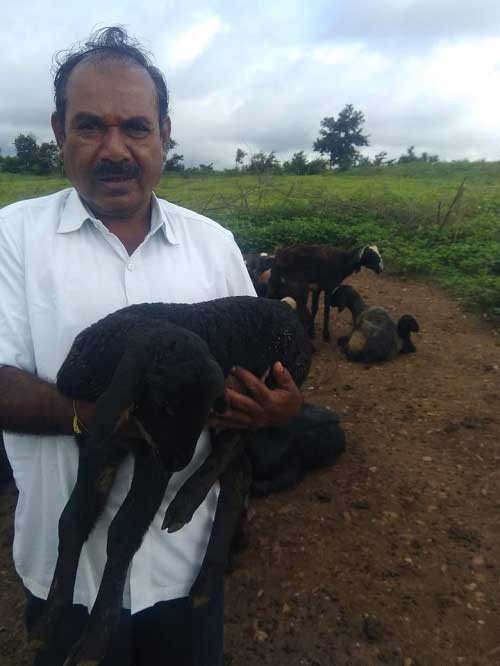
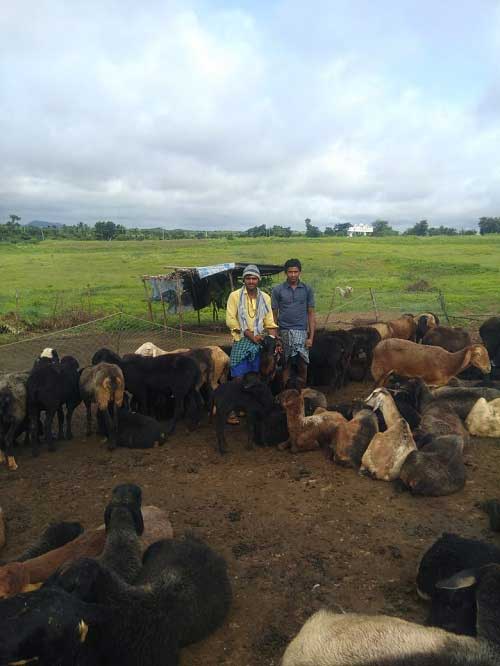
Even at present they are continuing their rearing activities with 200 Sheep. Current name of an educated farmer Shri. Ningappa Yellappa Karigar with qualification of B.Sc, B.Ed, belongs to 4th generation, and is a retired High School Head Master of Shri Jagadguru Fakkireshwar Education Society Shirahatti, Gadag and even he served as a Lecturer in the Training Institute for Teachers along with passion of Agriculture and Sheep rearing. Even his children are also continuing the rearing activities.
Let’s discuss some of their management practices which led them to continue from bunch of decades:
- Rearing Management: This shepherd follows Extensive (Free Range) system which is also called Nomadic system and they involve continuous movement with whole flock, and also they have kept 3 labourers for 200 sheep to look after them. Interesting one to know is that the Nomadic flockers knows very well to find the best pasture for grazing as well as drinking water at different seasons.
Within a year they will be covering Gadag, Haveri, Dharwad, Karwar, Koppal and some part of Belgaum districts of Karnataka. They mix few Goats also in the flock of sheep, as they believe that, the sheep is dumb animal and the goat helps it along the way of grazing.
- Feeding: As it is a form of extensive, the animal itself will find its own fodder and mostly they are maintained on natural vegetation grazing lands, uncultivated lands, stables of cultivated crops and tree toppings. To gain more weight they feed maize grains also.
While travelling in the nomadic form, the farmers usually request the shepherds to halt their sheep in their field and they will offer them to graze the leftover part after harvest and even the grains.
Due to halt for a long time the sheep usually defecates in the field itself and obviously it acts as manure to the field and fertility of the soil increases. If the manure is more in their field means they sell that also in Gunny bags (Rs.50/- per 20 kg Bag).
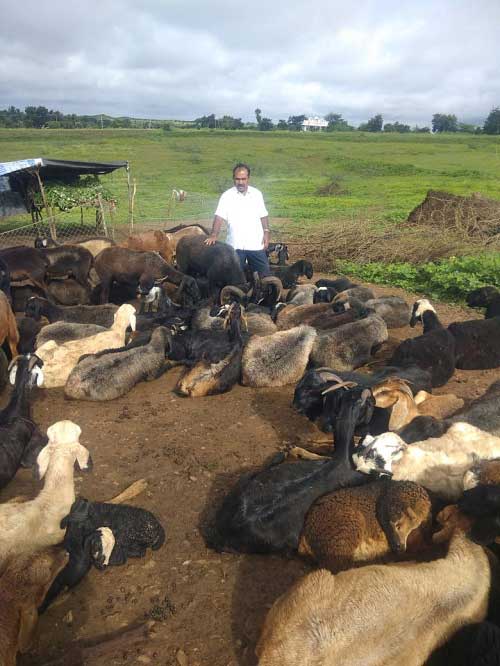
- Breeding: It’s a vital principle that every farmer will be taking care of his breeding activities. They breed it in a natural way of mating i.e., Tupping. In some cases, if the male is not available they will hire the same ram of Bannur breed at the breeding time. During pregnancy, they will not feed any kind of extra supplements.
At the time of marketing age, usually the rams are sold at 1-2 yrs of age, females are kept for breeding purpose(Rate depends on the marketing value and also based on the demands), sometimes the lambs at 3 months are sold to Rs.5,000 to Rs.6,000/-.
Mainly in the time of marketing season, the butchers themselves will go to the place where sheep are rearing in the field and they will pay the cash by hand there itself and buy them.
It’s a story of past 15 yrs where the same breed Bannur was used for wool purpose also and weaving work was the main occupation of home maker women of that family. By wool they used to make the blankets (Kambli), Sweaters, Caps, Bags, etc.
Shepherds select the two seasons for shearing that were before or after kaarkooli (June) and maagikooli (October-November).Best wool used be in the time of June which is used to be more waviness than other time due to climatic conditions supported by the early monsoon.
But at present it is mainly reared for mutton purpose only and exotic breeds replaced this for wool purpose.
- Treatment: Farmers are quite afraid of mass diseases like FMD (Foot and Mouth Disease), BT (Blue Tongue), etc and usually farmers follow hot branding methods and also the Ethno Veterinary Practices as known as Herbal treatment methods.
Some of the practices are listed below:
1) FMD- They use Calitropis gigantea( Cactus Milk) (Kalli Haalu)twigs and make its bed by cutting them into small bunches and the milk oozed out from the twigs acts as Antioxidant to the wounds between the clefts and creates the dryness and helps in decreasing the virulence activity of that virus.
2) BT- They feed unriped Musa acuminate (Sedded Bananas/Wild Bananas/Stone Bananas) by chopping them into small pieces+ Lemon+ Red Chilly powder and make it in the form of paste and they feed it by washing its mouth with KMnO4.
3) Endoparasite infestations like Liver flukes, Tapeworm, Round worm and to reduce the dairrhoea they used to make a powder form by mixing Fenugreek+ Pepper+ Onion+ Poppy seeds+ Garlic+ Turmeric+ Jaggery+ Cumin seeds+ Curry leaves+ Asafoetida and make it to eat or drink and sometimes feeding paste of soaked Greengram seeds which is rich in B Complex vitamins. To treat the facioliasis they used to feed the Aegle marmelos (Belavalakayi) fruit where now a days the Oxyclozanide drug is used that is nothing but extracted from the same fruit itself.
Problems faced by the Shepherds
- They clearly define the afraidness about the mass diseases during October and November months.
- Lack of knowledge in the management aspects if sudden death occurs due to outbreak.
Expectations from Government
- To control mass diseases by Veterinary doctors through vaccination programmes.
- The Govt. should give compensation to the dead animals from Natural disasters through Aadhar linking of the individual ones, so that it is benefits directly to them.
Really it was amazing experience to know the secrets behind the success story of the Shepherd of Shirahatti, as it led me to know more interesting facts about practical problems in Sheep Farming. Clearly the shepherd gave message that “One who loves the livestock as passion to rear, definitely he will be in the path of contributing to livelihood.’’


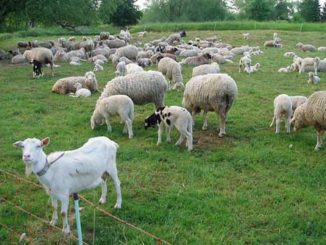
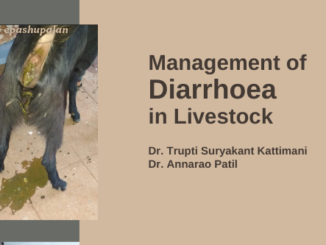
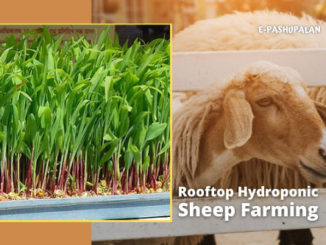

Nice and we’ll experienced article bro …
🙌keep going shashi..
ತುಂಬಾ ಚೆನ್ನಾಗಿದೆ 👍